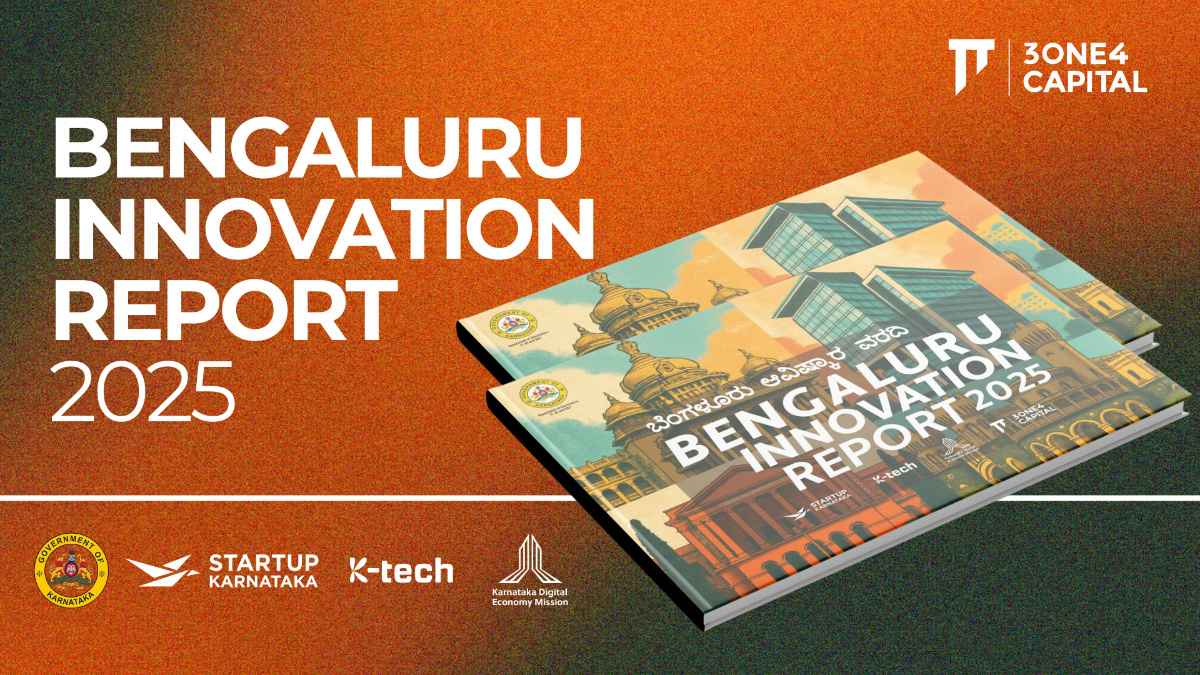
Simplify RBI Risk Accounting
RBI Must Simplify its Risk Accounting to Promote Transparency
An estimated ₹86,207crore might be undistributed to the government in FY24
The RBI shocked the market by announcing surpluses of ₹2,10,874cr to be distributed to the government. This is a significant 141% higher than the distribution of surpluses of ₹87,416cr in FY23, and much higher than the estimated ₹50,000cr budgeted in FY25. However, a study of its accounts from FY20 to FY24 shows that the RBI has been earning and transferring significant surpluses to its own reserves, particularly the Contingency Fund (CF) – amounting to ₹3,82,586cr over the last 5 years. In FY23, the allocation to CF was ₹1,30,875cr which reduced to ₹42,819cr in FY24. From this, one can conclude that RBI has been earning and retaining significant surpluses without passing to the government its entire due. RBI’s earnings also include significant income from Forex trading, which is uncertain and volatile, and could impact surpluses. Accounting for this as well, it seems like RBI is retaining significant surpluses, as detailed below.
An Analysis of RBI Accounts
A study of the income statements for FY24 shows a total interest of ₹1,88,605cr for the year, of which the interest income on foreign assets is ₹1,03,177cr. For FY24, the total earnings from average Foreign Currency Assets (FCA) are ₹1,87,471cr, whereas the income statement shows only ₹1,03,177cr – the difference of ₹84,294cr has been directly reduced from gross earnings and transferred to the Investment Revaluation Account-Foreign Securities (IRA-FS). In FY23, ₹91,831cr was transferred similarly. RBI earned a yield of 4.21% on its average FCA in FY24, whereas yield was 3.73% in FY23. The improvement of 0.48 percentage points reflects the higher interest rates on G-Sec securities in the global market. Every year, the RBI has been transferring substantial sums directly from its FCA earnings to its IRA-FS without disclosing in its income statement the adjustment it has made to its gross earnings.
The accounting policy of RBI states that its foreign securities (FS) and rupee securities (RS) are marked-to-market on a daily basis and unrealized gains are accounted in the IRA-FS and IRA-RS accounts, respectively. As of March 31, 2024, the IRA-FS had a negative balance of ₹1,43,220cr reflecting the decline in the mark-to-market value of FS due to the higher yield in the market. Similarly, IRA-RS had a negative balance of ₹7,090cr on March 31 2024. At the year end, these balances were reduced from the CF. However, they are both reversed on the first working day of the following accounting year. This is where RBI’s accounting policies do not reveal the full picture.
RBI also has a Currency and Gold Revaluation Account (CGRA) to take care of its currency risk, interest rate risk and movement in gold prices. The unrealized rupee gains and losses on FCA and gold after mark-to-market are not taken into the income account but instead accounted in the CGRA. Due to the depreciation of the rupee against the dollar value of FS and increase in market prices of gold, both of which are initially accounted for at cost, cumulative unrealized rupee gains are credited to the CGRA which had a balance of ₹11,30,793cr as of March 31 2024 as against ₹11,24,733cr as of March 31 2023.
In short, the decrease/increase in mark-to-market unrealized value of the FS and RS are taken to the IRA accounts while the increase in unrealized rupee value of the balance FS and gold due to rupee depreciation is credited to the CGRA. The Indian rupee is the reporting currency for RBI. None of these passes to the income statement unless realized. The negative balances of the IRA are debited from the CF at the end of each FY.
Holding Appropriate Risk Capital
For the RBI to manage its risk sufficiently, the Bimal Jalan Committee (BJC) recommended a policy of having a CF between 5.5-6.5% of its total balance sheet assets (BSA) as of year end, with allocations made from its surpluses annually. As of March 31 2024, the total funds for contingency were ₹4,58,095cr – 6.5% of BSA of ₹70,47,703cr. Further, the RBI must hold economic capital between 20.8-25.4% of BSA. As of March 2024, RBI’s economic capital (CF + Reserve Fund + Asset Development Fund + CGRA) amounted to ₹15,89,059 – 22.43% of BSA. This is the equity capital RBI has.
While these seem to be in line with the BJC recommendations, the startling revelation is that the economic capital is on mark-to-market value of investment assets whereas the risk is carried on the historic rupee cost of investment assets. It is only when the carrying value of investment assets declines to the rupee cost after setting off the CGRA that the risk crystalizes on the historic rupee cost of assets for which the CF is created. On the BSA net of CGRA, amounting to ₹59,16,739cr in FY24 (₹70,47,703cr - ₹11,30,793cr), the economic capital (₹15,89,059cr) rises to 26.86%. For FY23, with BSA net of CGRA at ₹52,18,668cr (₹63,44,756 - ₹11,24,733cr), economic capital (₹15,06,768cr) revises to 28.74%.
Because of its complex accounting, RBI is carrying surplus reserves – even by the standards of its own capital policy – due to calculating the economic capital on rupee value of mark-to-market of its investment assets than calculating it net of CGRA. We estimate an additional reserve of ₹86,207cr due to this accounting which could have been distributed to the government. {26.86% - 25.4% = 1.46% of BSA net of CGRA = ₹86,207cr}
Transparency via Simplified Risk Capital Accounting
Currently, the RBI is over-calculating its contingency by not netting the BSA of the CGRA. Further, the IRA (FS and RS) must be adjusted on the CGRA rather than keeping it separate and reducing from the CF at year end. It will be more transparent for the RBI to consider the risk on BSA net of CGRA, and then simplifying the CF computation by adjusting the IRA on the CGRA, and increasing the CF to, say, 10% of BSA net of CGRA. Economic capital must also be calculated on the same basis. All adjustments to mark-to-market value – decrease/increase in dollar value and translation to rupee – must be through the CGRA instead of passing it through additional accounts like the CF and IRA-FS. FS interest income in its income statement must reflect the gross earnings without any deduction to IRA. The CF must be maintained fully through allocations from its surplus without any adjustments from IRA.
When the IRA-FS and IRA-RS debited to the CF at the end of FY24 are added back, the total CF will come to ₹6,08,406cr – 10.28% of its BSA net of CGRA. This is a healthy risk capital for RBI. The CGRA then reduces to ₹9,80,652cr (by subtracting the IRA-FS and IRA-RS).
There is a great need for RBI to simplify its accounting, improve its disclosures, and promote transparency of its financial statements. To improve transparency, RBI could consider:
1. Accounting for its full earnings on average FCA in the income statement itself.
2. The IRA accounts to be set off on CGRA at year end so that it reflects the full increase in rupee value of its overseas assets. If the rupee appreciates, it will reflect in a decline in CGRA.
3. Allocating surpluses from its income statement to the CF as and when needed without any adjustment to the CF through IRA.
4. The economic capital including the CF must be on the BSA net of CGRA, and could be maintained at a higher ratio if required.
It is important to note that the RBI is fully owned by the sovereign, the Government of India, who can always recapitalize it when required. RBI’s risks on the balance sheet are ultimately that of the GoI, and RBI’s economic capital is essentially GoI’s equity. Carrying excess capital on RBI’s balance sheets translates to a reduction of government revenue. GoI will then have to unnecessarily borrow for its spending and increase its fiscal deficit rather than tap into the excess capital it already owns.
* fullworking in table below.

Originally Published on Financial Express
DISCLAIMER
The views expressed herein are those of the author as of the publication date and are subject to change without notice. Neither the author nor any of the entities under the 3one4 Capital Group have any obligation to update the content. This publications are for informational and educational purposes only and should not be construed as providing any advisory service (including financial, regulatory, or legal). It does not constitute an offer to sell or a solicitation to buy any securities or related financial instruments in any jurisdiction. Readers should perform their own due diligence and consult with relevant advisors before taking any decisions. Any reliance on the information herein is at the reader's own risk, and 3one4 Capital Group assumes no liability for any such reliance.Certain information is based on third-party sources believed to be reliable, but neither the author nor 3one4 Capital Group guarantees its accuracy, recency or completeness. There has been no independent verification of such information or the assumptions on which such information is based, unless expressly mentioned otherwise. References to specific companies, securities, or investment strategies are not endorsements. Unauthorized reproduction, distribution, or use of this document, in whole or in part, is prohibited without prior written consent from the author and/or the 3one4 Capital Group.





.webp)









